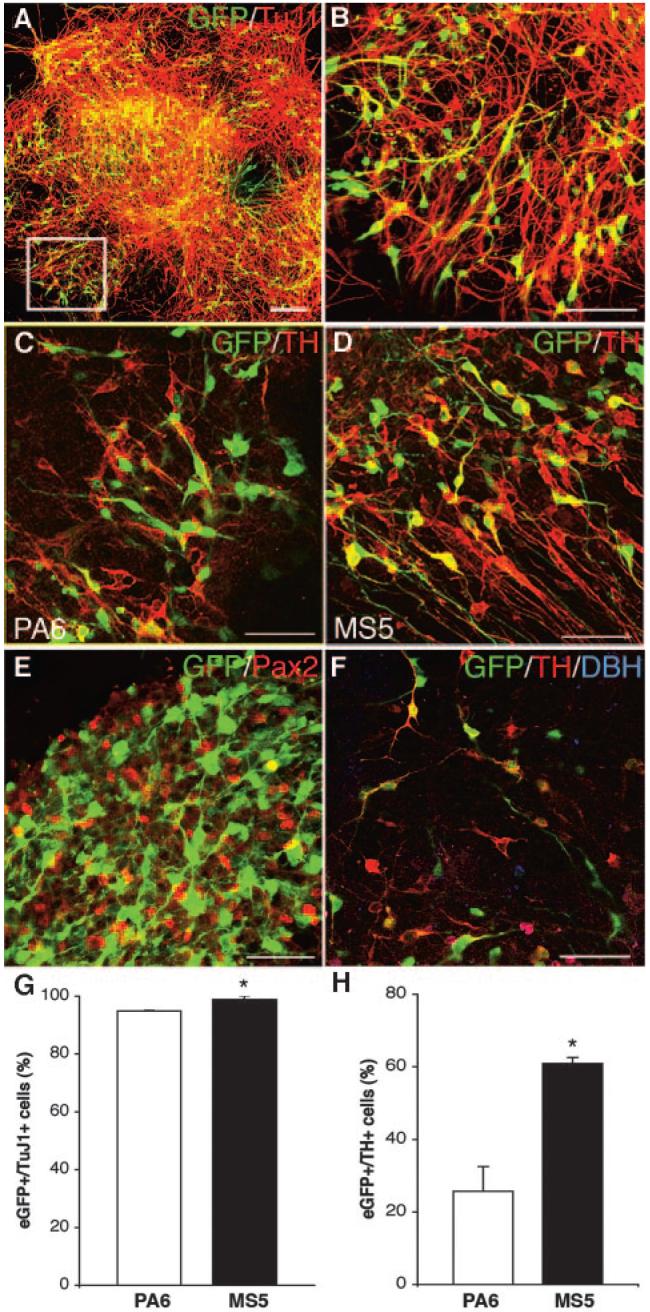Figure 2.
Comparison of MS5- and PA6-based in vitro differentiation protocols. (A-H): The 9-kilobase (kb) TH-eGFP mouse embryonic stem cells were analyzed in vitro after 9 days of differentiation using either the PA6 or MS5-based protocols. (A), enlarged in (B): eGFP and TuJ1 overlap was high using either protocol, although it was significantly higher using the MS5-based protocol (PA6, 94.9% ± 0.2% [SEM]; MS5, 98.9% ± 0.7% [SEM]) (yellow co-expression) (G). eGFP and TH overlap was significantly higher using the MS5-based compared with the PA6-based protocol (C, D, G) (PA6, 25.7% ± 6.8% [SEM]; MS5, 60.9% ± 1.6% [SEM]) (yellow co-expression). Pax2 immunofluorescent staining (E) showed the mid-hindbrain characteristic of the MS5 culture, with very little overlap between eGFP and Pax2, as anticipated based on the different temporal expression of TH and Pax2 during normal development. (F): There were few DBH+ cells generated in either PA6- or MS5-based protocols, and the DBH staining did not appear to overlap with eGFP expression. Bar graphs depicting overlap between GFP and TuJ1 expression (G) and eGFP and TH expression (H) in cells differentiated using PA6-based (white bars) or MS5-based (black bars) protocol for 9 days (*, p < .01, unpaired t test). Scale bars = 100 μm (A) and 50 μm (B-F). Abbreviations: DBH, dopamine β-hydroxylase; eGFP, enhanced green fluorescent protein; GFP, green fluorescent protein; Pax2, paired box gene 2; TH, tyrosine hydroxylase; TuJ1, class III β-tubulin.

